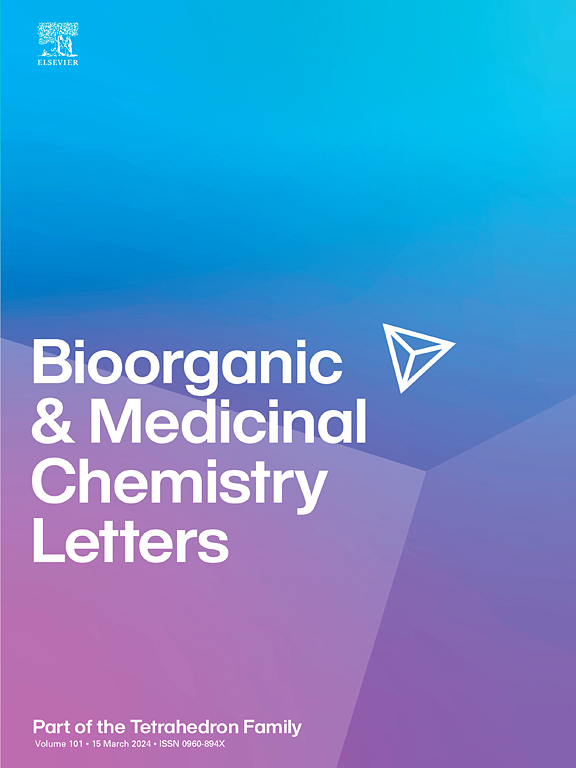Synthesis and antiproliferative activity of thiazole bioisosteres of goniofufurone and 7-epi-goniofufurone
IF 2.2
4区 医学
Q3 CHEMISTRY, MEDICINAL
引用次数: 0
Abstract
Several new goniofufurone (1) and 7-epi-goniofufurone (2) mimics in which the benzene ring has been replaced with a thiazole residue have been designed, synthesized and evaluated for their antiproliferative activity against a panel of human tumour cell lines. The key steps of the synthesis represent the initial condensation of suitably protected furanose urononitriles with cysteine ethyl ester hydrochloride, followed by the subsequent oxidation of resulting C-4′ epimeric thiazolines with BrCCl3 and DBU, to build up the thiazole ring. Biological studies have shown that the HeLa cell line is most sensitive to the action of synthesized analogues with IC50 values in the range of 0.01–7.67 μM. The most active compound in this cell culture was 7-epi-goniofufurone mimic 28, with a thiazole-carboxamide function at C-7 and a benzyloxy group at the C-5 position. Compound 28 exhibited 89-fold higher antiproliferative potency in this cell line than lead 2 and was 7-fold more active than the commercial antitumour agent doxorubicin. A SAR study identified structural features responsible for the antiproliferative activity of synthesized analogues. The analogues 3–28 are completely inactive toward the normal MRC-5 cell line. Their selectivity indexes (SI) range from 4.1 to 17,470.7.

goniofufurone和7-epi-goniofufurone噻唑类生物异构体的合成及其抗增殖活性
已经设计、合成了几种新的goniofufurone(1)和7-epi-goniofufurone(2)模拟物,其中苯环被噻唑残基取代,并评估了它们对一组人类肿瘤细胞系的抗增殖活性。该合成方法的关键步骤是首先与半胱氨酸乙酯盐酸盐缩合适当的呋喃糖脲腈,然后与BrCCl3和DBU氧化生成C-4 '外聚噻唑,形成噻唑环。生物学研究表明,HeLa细胞系对合成的类似物的作用最敏感,IC50值在0.01 ~ 7.67 μM范围内。该细胞培养中最活跃的化合物是7-表性腺呋喃酮模拟物28,在C-7位置具有噻唑-羧酰胺功能,在C-5位置具有苄氧基。化合物28在该细胞系中的抗增殖能力比铅2高89倍,比市售抗肿瘤药物阿霉素的活性高7倍。一项SAR研究确定了合成的类似物具有抗增殖活性的结构特征。类似物3-28对正常的MRC-5细胞系完全无活性。它们的选择性指数(SI)在4.1 ~ 17470.7之间。
本文章由计算机程序翻译,如有差异,请以英文原文为准。
求助全文
约1分钟内获得全文
求助全文
来源期刊
CiteScore
5.70
自引率
3.70%
发文量
463
审稿时长
27 days
期刊介绍:
Bioorganic & Medicinal Chemistry Letters presents preliminary experimental or theoretical research results of outstanding significance and timeliness on all aspects of science at the interface of chemistry and biology and on major advances in drug design and development. The journal publishes articles in the form of communications reporting experimental or theoretical results of special interest, and strives to provide maximum dissemination to a large, international audience.

 求助内容:
求助内容: 应助结果提醒方式:
应助结果提醒方式:


